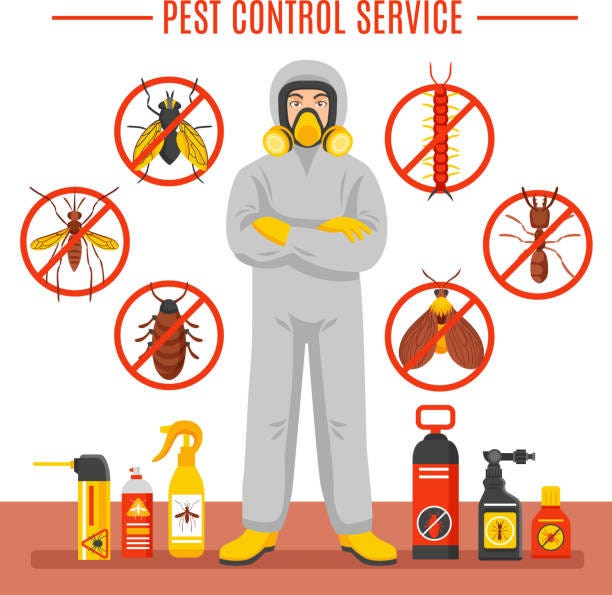Reliable A1 Bed Bug Exterminator Charlotte - Get Rid of Bed Bugs Quick
Reliable A1 Bed Bug Exterminator Charlotte - Get Rid of Bed Bugs Quick
Blog Article
Bed Insect Therapy Malfunction: Comparing Chemical Vs. Non-Chemical Solutions
In the realm of insect control, specifically when dealing with the consistent issue of bed pests, the option between chemical and non-chemical therapy options can be an essential one. Both approaches use distinctive benefits and drawbacks, affecting variables such as efficiency, security considerations, and total expense. By examining the nuanced details of each technique, a clearer understanding of which path to go after in resolving a bed bug invasion can be attained.
Performance of Chemical Treatments
Chemical therapies for bed bug infestations have been commonly identified for their powerful and rapid effectiveness in getting rid of these pests. When thinking about the effectiveness of chemical treatments, it is important to comprehend that they can provide a quick and thorough solution to a bed bug trouble. Professional pest control experts often depend on insecticides to target bed pests at numerous stages of their life cycle, consisting of grownups, nymphs, and eggs. These chemicals typically work by interrupting the bed pests' nerve system, causing paralysis and eventual fatality.
Moreover, chemical treatments have the advantage of using residual impacts, indicating that they can remain to get rid of bed pests also after the preliminary application. This residual activity is especially beneficial in combating any possible re-infestations. Furthermore, the rapid activity of chemical therapies can bring alleviation to individuals encountering severe bed bug infestations, enabling them to reclaim control of their home rapidly.
Safety Interest In Chemical Solutions
One essential element that needs mindful consideration when utilizing chemical remedies for bed insect treatment is ensuring the safety and security of owners and the environment. Exposure to particular chemicals utilized in bed insect therapies can lead to breathing problems, skin inflammation, or other damaging responses, especially in individuals with pre-existing problems or sensitivities.
Additionally, the environmental impact of chemical services is another substantial factor to consider. Some pesticides made use of in bed insect therapies might be damaging to useful pests, wildlife, and ecosystems if they seep into the dirt or water systems. It is vital to utilize chemical treatments sensibly, adhering to security standards, and thinking about much less toxic choices to alleviate these dangers and make sure the effective and safe administration of bed pest infestations.
Advantages of Non-Chemical Strategies
Taking into consideration the potential security worries and environmental influence associated with chemical solutions for bed bug treatment, exploring non-chemical approaches provides an encouraging choice with numerous distinct benefits. Non-chemical treatments are ecologically friendly, as they do not add to air or water pollution, making them a lasting selection for pest control.
In addition, non-chemical remedies can be efficient in targeting bed pests, consisting of hard-to-reach locations where chemical treatments may not penetrate - A1 bed bug exterminator charlotte. Methods such as warmth treatment, vacuuming, heavy steam cleaning, and bed mattress coverings provide complete elimination without the use of dangerous chemicals.
Limitations of Non-Chemical Treatments

In addition, non-chemical therapies typically call for several applications to attain effective obliteration. This can be lengthy and may not constantly assure total removal of all bed bugs and their eggs, particularly in hard-to-reach or covert locations.
Furthermore, the success of non-chemical therapies heavily counts on proper execution and thoroughness, which can be challenging for people without expert know-how. Inadequate application of non-chemical techniques might lead to incomplete removal, leading to relentless invasions and the demand for added treatments.
As a this result, while non-chemical therapies have their advantages, it is vital to acknowledge these limitations and consider them when determining one of the most reliable method for taking care of bed pest invasions.
Cost Comparison: Chemical Vs. Non-Chemical Options
Provided the limitations related to non-chemical treatments, a crucial aspect to review in the context of bed insect monitoring is the price contrast between chemical and non-chemical choices. Chemical treatments generally involve the application of insecticides by professionals, which can range from $250 to $900 per area, depending on the intensity of the infestation and the size of the location to be treated. In contrast, non-chemical therapies like warmth treatment or steam can be much more costly, with expenses varying from $1,000 to $6,000 for an entire home. While the first cost of chemical therapies might appear reduced, numerous therapies may be required to totally eradicate the infestation, potentially boosting the total cost. On the various other hand, non-chemical alternatives may supply an extra green and sustainable option, although they can be cost-prohibitive for some individuals. Ultimately, when taking into consideration the price of bed pest treatment options, it is necessary to consider the upfront expenditures versus the effectiveness and long-term sustainability of the picked method.
Verdict

Taking into consideration the possible pest control london safety and security concerns and ecological effect associated with chemical solutions for bed pest treatment, exploring non-chemical strategies offers an encouraging choice with a number of unique benefits.Offered the constraints connected with non-chemical treatments, an important element to examine in the context of bed bug administration is the expense comparison in between chemical and non-chemical alternatives. In contrast, non-chemical therapies like heat therapy or heavy steam can be much more expensive, with expenses varying from $1,000 to $6,000 for an entire home. While the initial expense of chemical treatments may seem lower, several treatments may be called for to completely eradicate the infestation, possibly boosting the general expense.In final thought, when comparing chemical and non-chemical bed insect treatment options, it is necessary to think about efficiency, safety and security, advantages, limitations, and expense.
Report this page